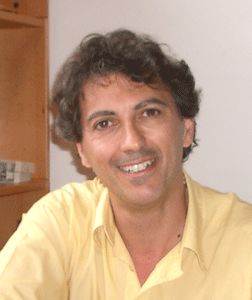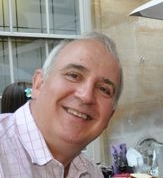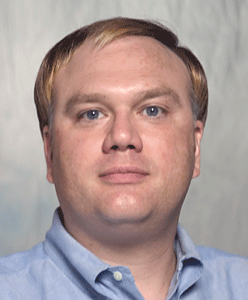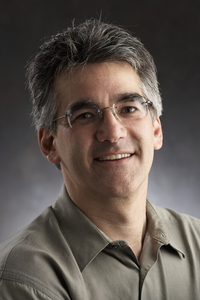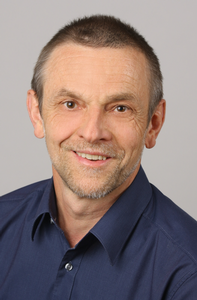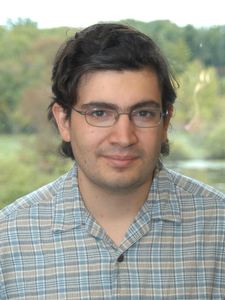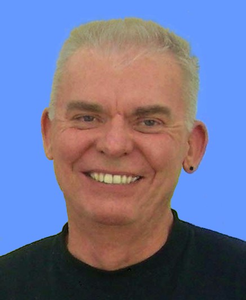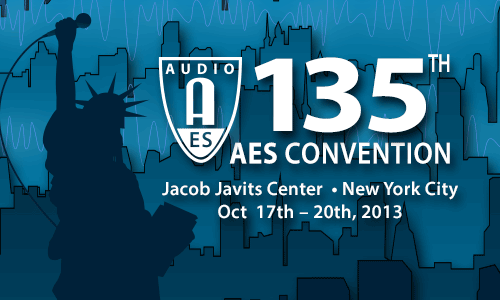
AES New York 2013
Product Design Track Event Details
Thursday, October 17, 9:00 am — 10:30 am (Room 1E10)
Product Design: PD1 - Best Practices in Audio Software Development
Presenter:Pascal Brunet, Setem Technologies - Newbury, MA, USA
Abstract:
This presentation reviews best practices accumulated through 25 years of software development experience. We first present the classical development "V" cycle: requirement specifications, prototyping, design (general and specific), coding & tests, validation. We then focus on each individual step: what should be included in good specifications; importance and good usage of prototyping; design methods; coding guidelines; testing methods; independent validation and beta testing. We finish with miscellaneous topics: estimation methods and risk assessment, project management, team work, source code control.
Friday, October 18, 3:00 pm — 5:00 pm (Room 1E07)
Tutorial: T10 - Linear Power Amplifiers Revisited: From Picowatts to a Kilowatt—A Practical Guide to Driving both Headphones and Loudspeakers Properly
Presenter:John Dawson, ARCAM - Waterbeach, Cambridge, UK; Jade Electronics - Landbeach, Cambridge, UK
Abstract:
This is a tutorial for students and working engineers covering classic and modern amplification design problems/solutions relating to interactions with a complex load and relating to in-ear balanced armature devices, over the ear headphones, and all types of speakers with 120 dB dynamic range. This would tackle class A, A/B, and related analog classes rather than class D.
 | This session is presented in association with the AES Technical Committee on High Resolution Audio |
Friday, October 18, 5:30 pm — 7:00 pm (Room 1E07)
Product Design: PD2 - High-Order Harmonic Distortion Measurement of Amplifiers and its Impact on Fidelity
Presenters:Dan Foley, Audio Precision - Worcester, MA, USA
Roger Gibboni, Rogers High Fidelity - Warwick, NY, USA
Abstract:
The electronics side of the audio industry has standardized on THD and THD+N as the main means of characterizing distortion, especially for amplifiers. However in 1942, RCA engineers who wrote the Radiotron Handbook proposed a weighted THD metric that weighted the energy of high-order harmonics to a much greater degree than low-order harmonics. Listening tests back then did show a correlation of amplifiers with very little high-order harmonic distortion being more acceptable compared to other designs with greater high-order distortion even though THD differed slightly. This presentation will focus on current measurement methods that can be used to separate high-order and low-order distortion.
Saturday, October 19, 9:00 am — 11:00 am (Room 1E09)
Product Design: PD3 - Telephony: An Introduction to the Acoustics of Personal Telecommunications Devices
Presenter:Christopher Struck, CJS Labs - San Francisco, CA, USA
Abstract:
The basic concepts of telephonometry and electroacoustics of telephones and personal telecommunications devices are introduced. Techniques for assessing analogue, digital, cellular, VoIP, USB, and other telephone devices are presented. Objective evaluation of the performance of handsets, headsets, speakerphones, and hands-free devices is discussed and interfacing to these devices is explained. Selection, calibration, and use of microphones, ear simulators, mouth simulators, and test fixtures are described. The send, receive, sidetone, and echo transmission paths are defined. The use of real speech test signals and pulsed noise for distortion is illustrated using examples from IEEE 269. The concept of Loudness Rating, its history, and standardized methods for its calculation are reviewed. Methods specified in ITU-T, IEEE, TIA, ETSI, and the 3GPP standards are explained.
 | This session is presented in association with the AES Technical Committee on Audio for Telecommunications |
Saturday, October 19, 11:00 am — 12:30 pm (Room 1E09)
Product Design: PD4 - Loudspeaker Nonlinear Identification
Presenter:Pascal Brunet, Setem Technologies - Newbury, MA, USA
Abstract:
This presentation reviews recent developments in the domain of loudspeaker nonlinear identification and explores new possibilities to improve modeling that is better match to the loudspeaker response. First we present the loudspeaker operation principles and the major causes of distortion, then we explore the successive modeling approaches that have been investigated in the last decades. Finally we provide new directions of research in the frequency domain and propose two techniques based on state-space for modeling of loudspeaker which can effectively be used in identification process.
Saturday, October 19, 3:15 pm — 4:45 pm (Room 1E09)
Product Design: PD5 - The Power of the Brand
Presenter:Adrian Weidmann, StoreStream Metrics - USA
Abstract:
This session will define "Brand" and explore its power and importance for the commercial success of your product development and/or service—be it a microphone, audio processing software, or recording studio. Developing, defining, and maintaining your brand and its message may the most important "product" you ever develop. This session will explore the power of Brand and outline seven key components to define your brand. The "Brand as Publisher" concept will be introduced, defined, and examples will be presented that can be used to create a meaningful dialog between your customers and your brand across available customer touchpoints—human, mobile, social media, web, and print. Understanding the power of this customer dialog can provide innovative insights for your product design team as well as propel your Brand.
Sunday, October 20, 9:00 am — 11:00 am (Room 1E08)
Tutorial: T18 - Small, Loud-Speakers: Taking Physics to the Limit
Presenter:Wolfgang Klippel, Klippel GmbH - Dresden, Germany
Abstract:
This tutorial plays on the challenge of engineering small loudspeakers that can also be loud, have high efficiency, and low distortion. While the basic construction and principle of the moving coil loudspeaker has remained unchanged for a century, our understanding of its operation and limitations has increased very considerably. Modern signal processing techniques, coupled with careful design of the magnet, voice coil, and suspension can be employed to create small drive units that have an optimum trade-off between the crucial design factors. An understanding of the perceptual effects that arise from these design trade-offs helps to bring about loudspeakers that not only measure well but sound good. This is particularly important as compact devices such as mobile phones demand more and more quality from tiny loudspeakers in minimal enclosures.
Sunday, October 20, 11:00 am — 12:00 pm (Room 1E14)
Product Design: PD6 - Razorbill: A High-Resolution, High-Capacity, Low-Power Autonomous Acoustic Recorder
Presenter:Peter Marchetto, Cornell University - Ithaca, NY, USA
Abstract:
High-fidelity, battery powered acoustic recorders are getting ever smaller and more ubiquitous. Most commercially available devices focus on increasing bit depth and sampling frequency, while de-emphasizing low power consumption. However, there is an increasing need for very long duration continuous recordings for biological and environmental studies. To fill this gap, we have developed and tested a new autonomous recorder capable of recording at a 16-bit depth and a sampling frequency of 48 kHz for over a month on only three alkaline batteries. This unit has a dynamic range of over 135 dB re 20 µPa when combined with a standard electret microphone, with a THD+N figure of <1.5 %. Data is stored on standard Secure Digital (SD) cards for easy offloading. The newest version under development will increase the recording capacity to a 24-bit depth and 96kHz sampling frequency, with the aim of maintaining the month-long duration.
Sunday, October 20, 2:30 pm — 4:30 pm (Room 1E10)
Product Design: PD7 - Is Your Equipment Design a Noise Problem Waiting to Happen?
Presenter:Bill Whitlock, Jensen Transformers, Inc. - Chatsworth, CA, USA; Whitlock Consulting - Oxnard, CA, USA
Abstract:
A design goal for all audio equipment is freedom from hum and buzz. But AC power normally creates a system environment of ground voltage differences. While a balanced interface is the first line of defense against this noise source, the balanced interface itself is very poorly understood by most engineers ... and practical aspects of its design are rarely taught in engineering schools. This leads engineers to design balanced input circuits that perform impressively in the lab but exhibit poor noise rejection in real-world systems. To make matters worse, internal equipment grounding schemes are often thoughtlessly designed. Two common results are noise coupled via cable shield connections, known as the "pin 1 problem," and by the AC power cord (so-called "sensitive" equipment). These and other design pitfalls, and how to avoid them, are the focus of this class.
